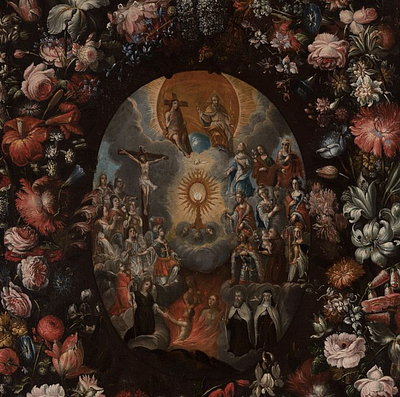Flemish School; XVII Century. "Holy supper". Oil on board.
Lot 134
About Seller
Setdart Auction House
Carrer Aragó 346
Barcelona
Spain
Setdart Subastas was born in 2004 and is currently the first online art auction in Spain with solidity, prestige and reliability guaranteed by our more than 60,000 users. Setdart has a young, dynamic and enterprising team ready to successfully manage the purchase and sale of art works through custom...Read more
Estimate:
EUR€5,000 - EUR€6,000
$5,376.34 - $6,451.61
Absentee vs Live bid
Two ways to bid:
- Leave a max absentee bid and the platform will bid on your behalf up to your maximum bid during the live auction.
- Bid live during the auction and your bids will be submitted real-time to the auctioneer.
Bid Increments
| Price | Bid Increment |
|---|---|
| EUR€0 | EUR€10 |
| EUR€200 | EUR€25 |
| EUR€500 | EUR€50 |
| EUR€1,000 | EUR€100 |
| EUR€3,000 | EUR€200 |
| EUR€5,000 | EUR€500 |
| EUR€10,000 | EUR€1,000 |
| EUR€20,000 | EUR€2,000 |
| EUR€50,000 | EUR€5,000 |
About Auction
By Setdart Auction House
Jul 14, 2021
Set Reminder
2021-07-14 06:30:00
2021-07-14 06:30:00
America/New_York
Bidsquare
Bidsquare : OLD MASTERS
https://www.bidsquare.com/auctions/setdart-auction-house/old-masters-7202
Setdart Auction House sofia@setdart.com
Setdart Auction House sofia@setdart.com
- Lot Description
Flemish School; XVII Century. "Holy supper". Oil on board. Presents micro-craquelure and small tears on the board. It has a period frame with slight damage. Size: 42 x 140 cm; 64 x 160 cm (frame). This work represents the biblical narration of the Last Supper, when Jesus, after blessing the bread and wine, announces that one of his disciples will betray him (John 13:21). This statement causes consternation among the twelve followers of Jesus, and that is the moment that the author represents, trying to reflect the feelings of each one, individualizing the characters; some are astonished, others are frightened, others comment among themselves the news. and finally Judas, sitting in the corner of the left side of the table, feels alluded, clearly showing the viewer the bag of coins with which they have paid for their betrayal, which he holds hiding it from his companions. Apart from him, two other disciples attract our attention. First, John the Evangelist, "the beloved disciple", appears deeply distraught, and is embraced by Jesus to soothe his pain. This entire scene has been developed in a rich interior that opens onto a landscape of great Flemish influence. During the 17th century, the realistic style of the Netherlands had a strong influence abroad, especially in Italy, but in the 17th century the picture is reversed. The Italian Renaissance spread throughout Europe, and Antwerp became the center of the Flemish school, supplanting Bruges and functioning as a center for the penetration of Italian influences. Thus, Mannerist influences arrived in the Netherlands, superimposed on the style of the 17th century. There were many painters who continued the style of the Flemish primitives, but others were so open to Renaissance influences that they even stopped painting on panel, the traditional medium of Flemish painting. In particular, this work can be related to those developed by the Francken family. Which began with Hieronimus Francken and was developed especially by Frans Francken II, who started from a style heir to that of Jan Brueghel de Velours, but also denotes strong influences in his early works are appreciated debts with Mannerism and painting of the sixteenth century, both in the structure of the compositions and in the rhythm and expression of his figures. They also include evident references to the work of Italian artists such as Raphael, Veronese and Zuccaro. Likewise, the use of prints by Dürer and Lucas de Leyden for some of the figures has been demonstrated.
- Shipping Info
-
In-house shipping available. Please inquire at admin@setdart.com.
-
- Buyer's Premium



 EUR
EUR CAD
CAD AUD
AUD GBP
GBP MXN
MXN HKD
HKD CNY
CNY MYR
MYR SEK
SEK SGD
SGD CHF
CHF THB
THB
















